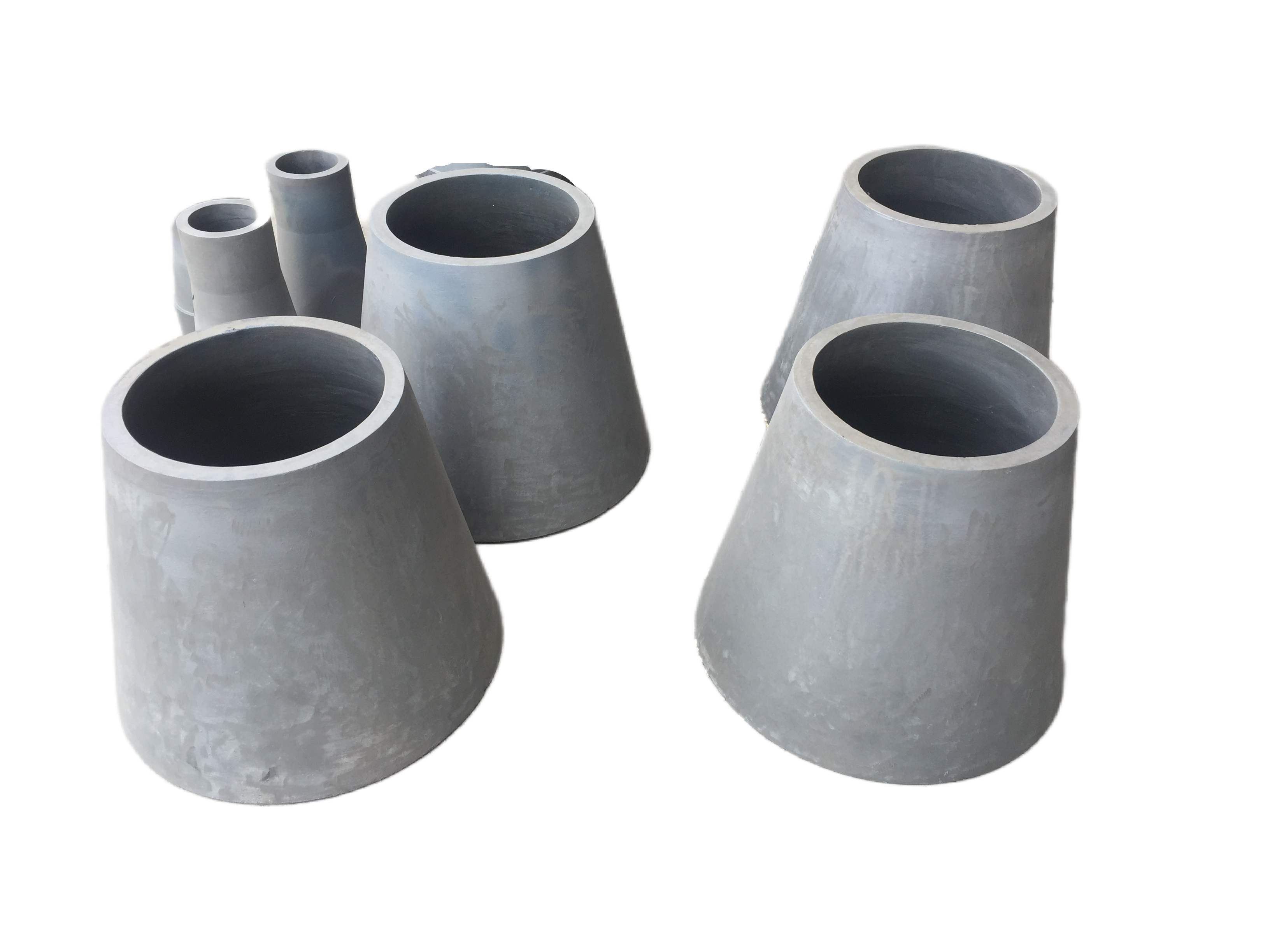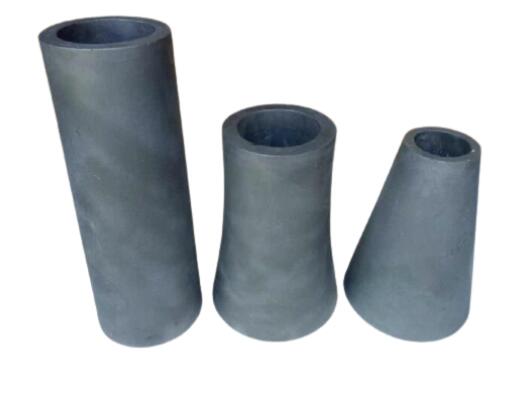


1. Good Oxidation resistance
2. Excellent Corrosion resistance
3. High temperature tolerance
4. Perfect Bending strength
Inquiry
|
Liners are designed for highly abrasive ores processed such as coal, iron ore, gold,copper, cement, phosphate, sand and other hard rock mining. Many products can be made from it such as beams, rollers, cooling air pipes, thermal couple protection tubes, temperature-measuring tubes,sealing parts, and special shaped parts.
Replaceable silicon carbide cyclone and hydrocyclone liners are specifically engineered for classifying applications.
Liners are designed for highly abrasive ores processed such as coal, iron ore, gold,copper, cement, phosphate, sand and other hard rock mining.
With a variety of highly abrasion resistant compositions available, Sunny Steel ceramic cyclone and hydrocyclone liners allow for:
- Improved life and performance over urethane, rubber or tiled construction
- Ease of installation
- Accurate and repeatable separation performance
Many products can be made from it such as beams, rollers, cooling air pipes, thermal couple protection tubes, temperature-measuring tubes,sealing parts, and special shaped parts.
What are the advantages of silicon carbide cyclone in coal preparation
Compared with other coal preparation methods, silicon carbide cyclone has its unique advantages, which can be summarized as follows:
- It has the advantages of large processing capacity per unit volume, high separation accuracy and low separation particle size limit, which can be used for raw coal separation with various washability. The unit capacity of cyclone is much higher than other gravity separation equipment.
- Less investment and convenient management. The traditional view is that the dense medium coal preparation system is complex, the equipment wear is serious, the maintenance quantity is large, the management is difficult, the coal preparation cost is high, and so on. However, with the continuous improvement of dense medium coal preparation technology, especially the advent of three product heavy medium cyclone, and the emergence of corresponding auxiliary equipment and reliable wear-resistant materials, the above understanding has fundamentally changed.
- The small size of the plant and the compact and neat layout of the equipment make it convenient for the construction of the coal preparation plant to realize the scale and greatly shorten the construction period of the coal preparation plant.
At present, there are two series silicon carbide products of pressureless sintering silicon carbide (SSIC) and reaction sintering silicon carbide (SISIC), which are widely used in mining, metallurgy, chemical industry, electric power, petroleum, furnace, machinery, steel, energy, environmental protection, building materials, semiconductor, aerospace and other fields. Compared with reaction bonded silicon carbide, pressureless sintered silicon carbide has higher purity, better mechanical properties, more prominent corrosion resistance(Resistant to strong acid and alkali corrosion, It is also the only ceramic material which can resistant to hydrofluoric acid corrosion), higher wear resistance, because of there’s no free silicon in the material. It can be used longer service life in environments which other materials not meet.
Silicon carbide (SiC) is a lightweight ceramic material with high strength properties comparable to diamond. It has excellent thermal conductivity, low thermal expansion, and is resistant to acid corrosion. Silicon carbide is an excellent ceramic material suitable for applications requiring good corrosion resistance and wear resistance.
Silicon carbide is formed in two ways, reaction bonding and sintering. Each forming method greatly affects the end microstructure.
Reaction bonded SiC is made by infiltrating compacts made of mixtures of SiC and carbon with liquid silicon. The silicon reacts with the carbon forming more SiC which bonds the initial SiC particles.
Sintered SiC is produced from pure SiC powder with non-oxide sintering aids. Conventional ceramic forming processes are used and the material is sintered in an inert atmosphere at temperatures up to 2000ºC or higher.
Both forms of silicon carbide (SiC) are highly wear resistant with good mechanical properties, including high temperature strength and thermal shock resistance. Our engineers are always available to best advise you on the strengths and weaknesses of each ceramic for your particular needs.
The crystal structure of the SiC ceramic wear-resistant pipe is similar to that of the diamond tetrahedral structure. It is a compound composed mainly of covalent bonds. Its hardness is high (Mohs 9.3), its performance is stable, and its physical properties are similar to diamond. It is also known as emery. Black silicon carbide crystal Hardness is the second-order material for diamonds. It is mainly used for making abrasives and grinding wheels, and partly for the production of silicon carbide ceramics.
| item | unit | data |
| temperature of application | C | 1380 |
| density | g/cm3 | >=3.02 |
| open porosity | % | <0.1 |
| bending strength | Mpa | 250(20C) |
| Mpa | 280(1200C) | |
| modulus of elasticity | Gpa | 330(20C) |
| Gpa | 300(1200C) | |
| thermal conductivity | W/m.k | 45(1200C) |
| coefficient of thermal expansion | K-1*10-6 | 4.5 |
| rigidity | 13 | |
| acid-proof alkaline | Excellent |














